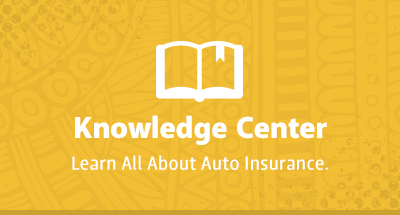How to Manage Road Rage Effectively

Hundreds of road rage incidents are reported every year in the United States. Those who have encountered aggressive drivers in person can attest that the experience can be incredibly terrifying. Road rage statistics reveal it is far more dangerous than some may think.
Recent data from the National Highway Traffic Safety Administration (NHTSA) revealed that 94% of all traffic accidents are caused by driver error. Of those accidents, 33% could be linked to behaviors typically associated with road rage, such as illegal maneuvering or misjudging the intent of another driver. It is important to point out that there is a difference between aggressive driving and road rage. Although both of these behaviors involve unsafe driving practices, road rage is not the same thing as aggressive driving. If you are unsure what the difference may be, do not worry, we will define both below.
What is Road Rage?

Road rage is the act of using your car as a weapon to retaliate against other drivers. Here are some common acts of road rage:
- Prolonged sounding of your horn to harass another driver
- Sudden braking in front of another vehicle
- Tailgating dangerously close or nudging the bumper of another vehicle
- Getting out of your vehicle with intent to injure another driver
- Forcing another driver off the road
Road rage typically involves a deliberate and purposeful act designed to cause harm to another driver. Road rage is usually a result of a series of stressors rather than a single event. Some examples of these may include a driver who is stressed about work, financial, or relationship problems. This form of chronic stress can lead to aggressive driving tendencies, which can easily escalate into road rage.
What Is Aggressive Driving?
According to the National Highway Traffic Safety Administration (NHTSA), aggressive driving occurs when an individual commits a combination of moving traffic offenses to endanger another person or property. Aggressive driving often includes a series of these offenses:
- Following too closely to another vehicle
- Changing lanes without caution or signal
- Running a red light
- Improper passing
- Speeding
- Failure to yield
A distinction is made between the traffic offense of aggressive driving and the criminal offense of road rage, which is defined as an assault with a motor vehicle or other dangerous weapon by the operator or passenger(s) of the automobile.
Road Rage Factors
Common factors that often contribute to road rage incidents or aggressive driving behavior are:
- Running late: Running behind for work, an appointment or a meeting can cause drivers to become impatient.
- Traffic delays: Heavy traffic, sitting at long stoplights, or not being able to locate an easy parking spot can increase a driver’s anger level.
- Anonymity: If drivers think they won’t see other drivers again, they may feel more comfortable in engaging in risky driving behaviors like tailgating, excessive honking, making rude gestures, or cutting people off.
Most Common Forms of Road Rage
Road rage happens more often than you would think. Drivers swerve in, cut someone off, and people start losing their tempers. The AAA Foundation for Traffic Safety found that almost 80 percent of drivers displayed signs of road rage while behind the wheel. While road rage is common, that does not mean it is right to succumb to frustration and let your emotions take over.

Aggressive driving has increasingly become a major cause of concern for many road users. Learn about the most common form of road rage so you can avoid any aggressive driving behavior.
- Tailgating
- Yelling
- Honking in anger
- Cutting off another vehicle on purpose
- Making angry gestures
- Bumping or ramming another vehicle on purpose
- Trying to block another vehicle from changing lanes
Learning how to avoid road rage is a part of being a safe driver. If you don’t rush and give yourself ample time to get to your destination, you’re less likely to become impatient and take unnecessary risks. If you find yourself getting upset, take a deep breath, and allow yourself some time to calm down.
Is Road Rage a Crime?

A major difference between aggressive driving and road rage is how the law treats the offense.
Aggressive driving can result in misdemeanor traffic tickets. This means that the offender may be subject to pay a fine and could face possible jail time. Being found guilty of aggressive driving can also result in the loss of driving privilege and a negative impact on your auto insurance policy. On the other hand, road rage is considered a serious criminal offense because the driver engaging in it has the intent to cause harm. By participating in road rage, you could face jail time, pay costly fines, or even receive a felony.
Remember, laws vary from state to state, and almost every state considers road rage a crime. If you want to learn more about your individual state’s regulations, our best recommendation is to check your state’s DMV website.
Tips to Stay Safe

We understand that getting behind the wheel can be stressful at times. It’s a good idea to put yourself in other people’s shoes and remember to give other drivers a break. If someone is driving slowly, keep in mind that they may be lost or simply looking for an address, go easy on them. Keep yourself safe and avoid any unnecessary road rage.
- Allow yourself enough time to get to your destination
- Be patient with slow drivers
- Lay off the horn
- Don't tailgate
- Don't use threatening hand gestures
- Never stop to confront another driver
It’s important to remember that you can’t control other drivers; you can only control your reactions to them. Empathize with other drivers, assume he or she is having a hard day, and made an honest mistake. If you ever find yourself in a threatening situation, drive to a police station or a crowded public place.
Drive safely, be courteous to other drivers, and don't drive when angry or upset. Also, make sure you have the right car insurance policy to protect yourself and your vehicle from aggressive drivers or if you find yourself the victim of a road rage incident.
Recognizing aggressive driving behaviors can make you a safer, more alert driver. A part of being a safe driver is enrolling in car insurance you can trust. If you ever come into a road rage situation, you can be prepared and covered. If you want to learn more about our policies and coverage, give us a call at 888-449-0174 to get a free quote today.






